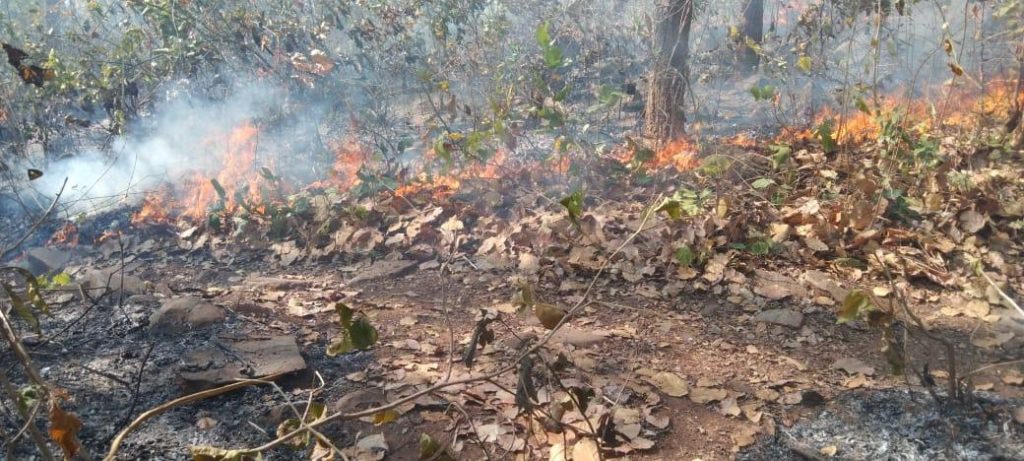Pradeep Kumar Nayak
The summer season is aptly dubbed “the fire season” because most of the tropical jungles the world over catch fire during this period. Wildfire, more often than not, results from exposure of dry leaves and wood to the torrid heat of the sun for a long period of time that usually ignites a spark. On the contrary, tribal people who practise ‘podu’ cultivation or ‘swiddening’ or slash and burn method of agriculture in hill terrains at times set fire to the dry leaves resulting in a destructive conflagration. Anyway, setting fire to the jungle amounts to ecocide that creates ecological disequilibrium and adversely affects the flora and fauna. Of late, forest fires in the Simlipal National Park in Mayurbhanj district, in the Ranipathar Ghat regions of Boudh and Kalinga Ghat forest belt of Kandhamal district have caused widespread panic among the people. The billowing smoke and the smouldering fire have considerably raised the temperature of the affected regions.
Phillip Connors, the former editor of The Wall Street Journal, in his book “The Fire Season” has vividly described the large-scale devastation caused by a jungle fire known as the McKnight Fire that took place in the Black Range Forest Range in the South West of America in 1951. This jungle fire destroyed 50,000 acres of forest cover and priceless bio-diversity. To quote Phillip Connors, “Jungle fires are malignant intruders in a fragile landscape.” Ever since that incident the American forest guards and officials are on alert to check incidences of fire accidents in their jungles. They use a sophisticated instrument called Osborne Fire Finder to accurately locate the jungle fire and its distance from them. The world has hardly forgotten the devastating jungle fire in California in 2018 in which 0.72 million hectare of valuable virgin forest was reduced to ashes. The toxic fume emanating from the burning jungle made the affected region dark and smoky for three days. Similarly, the forests in the vicinity of Victoria and New South Wales in Australia caught fire in January, 2019 and decimated millions of animals and ravaged 5.8 million hectare of green cover.
As per the Forest Fire Survey Report of India (2020), in our country an area of 1,52,421 square kilometre out of a total forest area of 7,12,249 square kilometre are vulnerable to jungle fire. So, adequate protective measures must be taken. In India, 24,817 incidents of forest fires were recorded in the year 2015. Similarly, in the years 2016, 2017, 2018 and 2019, the fire accidents in forests were reported to be 35,888, 37,059, 58,083 and 29,547 respectively. In February 2018, the forest fire in the Bandipur Tiger Reserve in Karnataka was one of the worst cases in India. It destroyed 4,800 hectare of precious jungle. The helicopters of the Indian Air Force took five days to douse the fire.
The recent incidents of forest fires in different regions of Odisha have exposed our shortcomings in facing natural disasters that are very often presumed to be unforeseen. The Wildlife Protection Act, 1972 and the Forest Conservation Act, 1980 should be strictly enforced in our country to check wanton destruction of our forest cover and wildlife, otherwise culprits will be emboldened to go against the Nature at their will and pleasure.
The writer is Principal, Jeevan Jyoti College, Raikia (Kandhamal). Views are personal.
